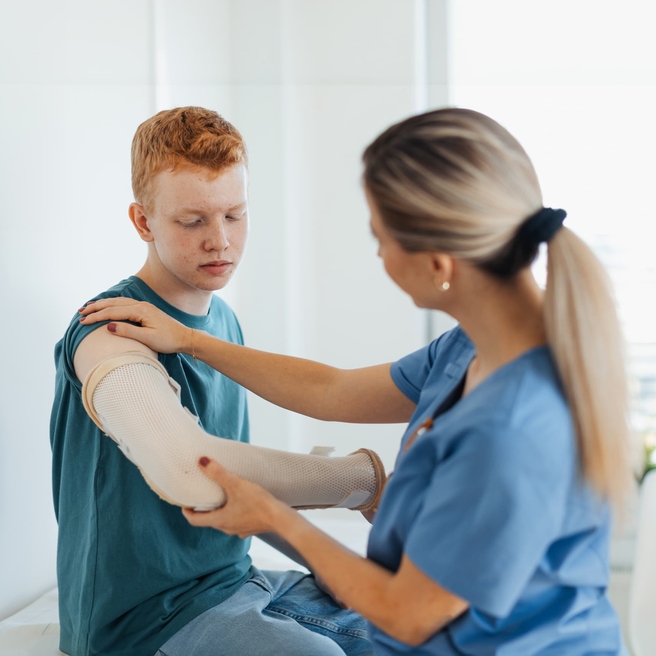What is Osgood-Schlatter disease?
Osgood-Schlatter disease is an overuse condition or injury of the knee that causes pain and swelling below the knee area over the shin bone in growing children and adolescents.
What causes Osgood-Schlatter disease?
Osgood-Schlatter disease is characterized by inflammation of the patellar tendon and surrounding soft tissues. It is caused by the constant pulling of the patellar tendon on the area below the knee where the tendon attaches.
Who is affected by Osgood-Schlatter disease?
Osgood-Schlatter disease is seen in the growing child and adolescent, particularly those who participate in athletics. This is an age where the bones are typically growing faster than the muscles and tendons. As a result, the muscles and tendons have a tendency to become tight.
Osgood-Schlatter disease is most often seen in preteen and teenage boys from 10 to 15 years old. It is common in young athletes who play games or sports that involve running, jumping, or going up and down stairs. Adolescent athletes who are affected are most often involved in football, soccer, basketball, gymnastics, or ballet.
What are the symptoms of Osgood-Schlatter disease?
The following are the most common symptoms of Osgood-Schlatter disease. However, each adolescent may experience symptoms differently. Symptoms may include:
- Tenderness below the knee
- Swelling below the knee
- Limping (may worsen following jumping activities)
The symptoms of Osgood-Schlatter disease may resemble other conditions or medical problems of the knee. Always consult your adolescent's doctor for a diagnosis.
How is Osgood-Schlatter disease diagnosed?
In addition to a complete medical history and physical examination, diagnostic procedures for Osgood-Schlatter disease may include:
- X-rays. A diagnostic test that uses invisible electromagnetic energy beams to produce images of internal tissues, bones, and organs onto film. X-rays may be performed to rule out other lesions.
Treatment for Osgood-Schlatter disease
Specific treatment for Osgood-Schlatter disease will be determined by your adolescent's doctor based on:
- Your adolescent's age, overall health, and medical history
- The extent of the condition
- Your adolescent's tolerance for specific medications, procedures, or therapies
- Expectations for the course of the condition
- Your opinion or preference
The goal of treatment is to control the knee pain and limit your teen's activities that could aggravate the condition. Treatment may include:
- R.I.C.E. (rest, ice, compression, and elevation)
- Medications (anti-inflammatories for discomfort and swelling)
- Elastic wrap or a neoprene knee sleeve around the knee
- Activity restrictions
- Physical therapy (to help stretch and strengthen the thigh and leg muscles)
Long-term outlook for an adolescent with Osgood-Schlatter disease
Osgood-Schlatter disease often resolves with time. Rarely is surgery required for this condition.

Why choose CHOP
We have more specially trained sports medicine physicians, orthopedic surgeons, physical therapists and athletic trainers than any other pediatric orthopedic facility in the region.
Resources to help
Sports Medicine and Performance Center Resources
We have created resources—including patient and family educational materials, videos, and more—to help you find answers to your questions and feel confident about the care you are providing your child.
